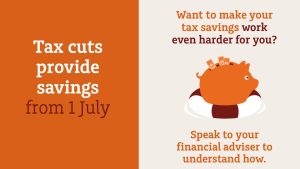This has allowed older Australians to have more money
to fund their retirement.
Although this is good news for people who have benefited
from this scheme, some people may have missed out because they didn’t fully understand the eligibility rules.
Who is eligible?
Currently, you need to be 65 or over at the time of making
the downsizer contribution to your super. However, from
1 July 2022, the Government has proposed lowering this
age to 60. So, if it’s appropriate for you, you can downsize and contribute to your super earlier.
Here’s a summary of the other rules around making downsizer contributions:
- You or your spouse need to have owned your home for more than 10 years prior to the sale.
- Both you and your spouse can make a downsizer contribution of $300,000 each if you both lived in the property at some point in time. The proceeds of the sale are exempt or partially exempt from capital gains tax (CGT) under the main residence exemption. The proceeds of a property purchased before 20 September 1985 (pre CGT asset) also qualifies for exemption – as it would have qualified for at least a partial main residence exemption had it not been a pre-CGT asset.
- If only you lived in the property at some point in time then only you, not your spouse, can make a downsizer contribution (as long as you meet all other conditions).
- An investment property that you haven’t lived in is not eligible.
- Houseboats, caravans or mobile homes are not eligible.
- You need to make all downsizer contributions within 90 days of receiving the proceeds of sale, usually the date of settlement.
- You can only make a downsizer contribution from the sale of one main residence.
How do you participate?
You will need to complete the Downsizer contribution into super form*. You must give this form to your super fund before or when you make the contribution.
What’s not required?
• You don’t need to buy another property.
• The total super balance test of $1.7 million and the $110,000 non-concessional contributions cap restrictions don’t apply.
• You don’t need to satisfy any ‘work test’.
* https://www.ato.gov.au/Forms/ Downsizer-contribution-into-superform
Case study
A couple without super can still reach a comfortable retirement with the help of downsizer super contributions
Let us pretend it is now 1 July 2022 and the Federal Budget proposals are law. A couple with nothing in super and between the ages of 60 and 74 sell their home for $2 million. The couple may get up to
$1,260,000 into super (combined) by taking advantage of the relaxation of the contribution rules.
How does this work?
Each member of a couple can make a downsizer contribution of up to $300,000 each (total combined $600,000). Then they may each take advantage of the bring-forward rule and contribute up to $330,000 into super ($660,000 combined).
This adds to a total combined amount of $1,260,000.
The Association of Superannuation Funds of Australia (ASFA) estimates a couple needs $640,000 for a comfortable retirement.
This example places this couple in a good position for their retirement.
Don’t forget preservation and Centrelink implications
It’s worth remembering that making a downsizer contribution means that if you’re under 65 and have not yet retired from the workforce (or don’t meet another condition of release) your money will be preserved.
This means you can’t access your super, including your downsizer contribution, until you are retired or meet another condition of release.
Also, if you have reached pension age and your family home is currently exempt from the Centrelink assets
and income test, selling it and contributing the proceeds into super could affect your age pension entitlements.
Before making a downsizer contribution, please speak to us. We can make sure you’re eligible, help you to maximise
your contributions, understand other contribution rules and assess how it will affect your overall financial position.







